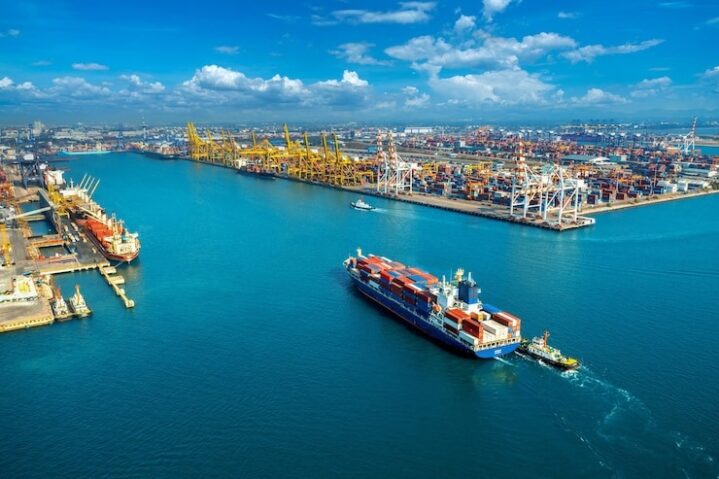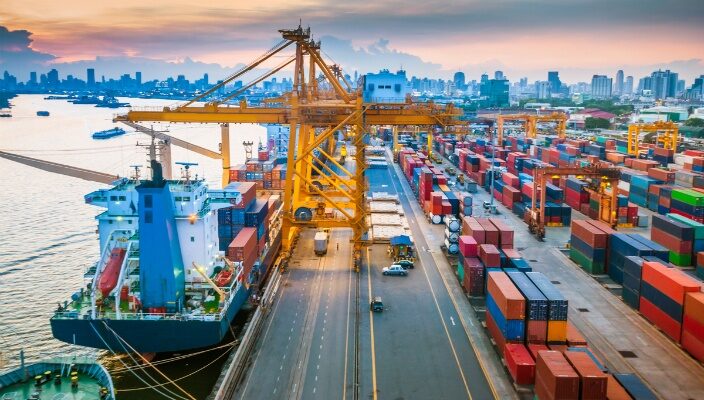Navigating the maritime industry is no small feat, especially with the evolving web of international regulations that shipowners and operators must follow. Ensuring compliance not only protects the efficiency and reputation of the operation but also safeguards the crew, environment, and global trade.
Utilizing resources like the container shipping index and digital platforms like SHIPNEXT, organizations can stay equipped to meet these challenges. Below, we explore critical strategies to align with regulatory standards and achieve operational excellence in maritime safety.
Understanding Maritime Safety Regulations
International maritime regulations are designed to establish global standards for vessel safety, pollution prevention, and labor rights. Frameworks like the IMO’s SOLAS (Safety of Life at Sea) and MARPOL (International Convention for the Prevention of Pollution from Ships) provide comprehensive guidelines.
Key areas of regulation include:
- Vessel construction: Materials and design must meet strict safety standards.
- Environmental protection: Regulations restrict emissions and waste discharge to minimize ecological risk.
Understanding these core policies forms the foundation for achieving consistent compliance in ship operations. Maritime safety regulations form a complex but essential framework for ensuring safe operations at sea.
The system is built around international conventions developed by the IMO, with implementation and enforcement carried out by flag states, port states, and coastal authorities.
The key to understanding these regulations is recognizing that they work together as an integrated system. SOLAS provides the fundamental safety requirements, MARPOL addresses environmental protection, STCW ensures qualified personnel, and the ISM Code creates management accountability.
For anyone working in the maritime industry, staying current with these regulations is crucial. The regulatory landscape continues to evolve, particularly in areas such as environmental protection, cybersecurity, and the integration of digital technology.

Implementing Safety Management Systems
A robust Safety Management System (SMS) ensures adherence to regulatory standards while fostering systematic operations onboard. This framework aligns with the ISM (International Safety Management) Code, which is pivotal for maritime compliance.
The components of an effective SMS are as follows:
- Defined roles and responsibilities to improve operational clarity.
- Processes for hazard identification and risk mitigation.
- Regular updates to align with changing international regulations.
Implementing such a system not only streamlines shipping management but also builds a proactive approach to safety.
Port State Control Excellence
Port State Control (PSC) is the inspection of foreign ships in national ports to verify that the condition of the ship and its equipment comply with the requirements of international regulations.
PSC serves as a “second line of defence” against substandard shipping.
Successful PSC preparation requires:
- Pre-arrival compliance checks.
- Complete documentation availability.
- Crew familiarity with procedures.
- Equipment functionality verification.
- Maintenance record updates.
Statistics show that vessels with comprehensive compliance programs experience 70% fewer detentions during PSC inspections.
Environmental Compliance Strategies
All vessels greater than 400GT are required to comply with Phase 3 EEDI effective from January 1st, 2025, requiring at least a 30% reduction compared to the initial baseline. Environmental compliance encompasses:
Ballast water management systems must meet IMO standards. Vessels operating in ECAs require compliant fuel with a maximum 0.1% sulphur content. Garbage discharge regulations prohibit plastic disposal at sea, while sewage systems need proper certification.
Regular Training and Certification
STCW compliance requires continuous crew training verification. Officers need valid certificates of competency, while all crew members must complete basic safety training. Regular drills include firefighting, abandon ship procedures, and pollution prevention.
Advanced training programs show a 40% improvement in compliance scores. E-learning platforms enable flexible scheduling while maintaining certification requirements.
Well-trained crew members are the backbone of compliance. Regular training programs equip maritime personnel with the skills required to handle emergencies, maintain environmental sustainability, and operate vessels efficiently within regulatory mandates.
Organizations must also keep certifications updated for all crew members to ensure ongoing alignment with international maritime policies.
Routine Inspections and Audits
Frequent vessel inspections and audits are critical to maintaining operational and regulatory compliance. These processes highlight potential gaps in safety management and prevent costly legal ramifications.
There are the following types of audits:
- Regular monitoring by the company’s management system.
- Independent evaluations for alignment with global standards.
Routine checks also ensure that shipping operations remain efficient without violating international regulations.
Effective Communication and Reporting
Clear communication between maritime stakeholders is essential for reducing risk and ensuring operational clarity. Efficient reporting systems help document compliance and alert relevant authorities to potential issues before minor mishaps escalate.
Key aspects of effective communication include:
- Use digital tools to convey vessel locations and operational changes.
- Crew members must report safety breaches or maintenance concerns promptly.
Fostering open communication ensures that all parties, from crew to regulatory bodies, are on the same page.
Technological Advancements in Maritime Safety
Modern technology has revolutionized how shipping companies meet compliance demands. From advanced monitoring systems to AI-supported predictive tools, technology minimizes the risk of human error and enhances overall vessel safety.
Technological tools include:
- Emission monitoring systems: Track and reduce exhaust gases to meet environmental standards.
- Digital compliance platforms: Platforms streamline documentation and provide real-time updates on regulatory requirements.
By integrating these advancements, maritime operators can improve efficiency and maintain compliance with ease.

Cost-Benefit Analysis
Non-compliance costs average $50,000 per incident, including fines, detention fees, and operational delays. Comprehensive compliance programs typically cost $200,000 annually but prevent average losses of $800,000 from violations.
Investment in compliance technology shows a 300% return within three years through reduced incidents and improved operational efficiency.
Best Practices for Continuous Compliance
Regular benchmarking against industry standards identifies improvement opportunities. Participation in voluntary compliance programs like Green Marine demonstrates a commitment to excellence.
Successful maritime operators must embrace regulatory evolution while maintaining operational excellence. Proactive compliance strategies ensure competitive advantage in increasingly regulated environments.
Conclusion
Ensuring compliance with international maritime regulations is critical for safe, sustainable, and efficient shipping operations. From understanding safety regulations to leveraging modern technology, each step builds a resilient framework for today’s complex regulatory environment.
With a proactive approach, the maritime industry can continue adapting to a rapidly changing global landscape, reducing risk and ensuring long-term success in every vessel operation.
